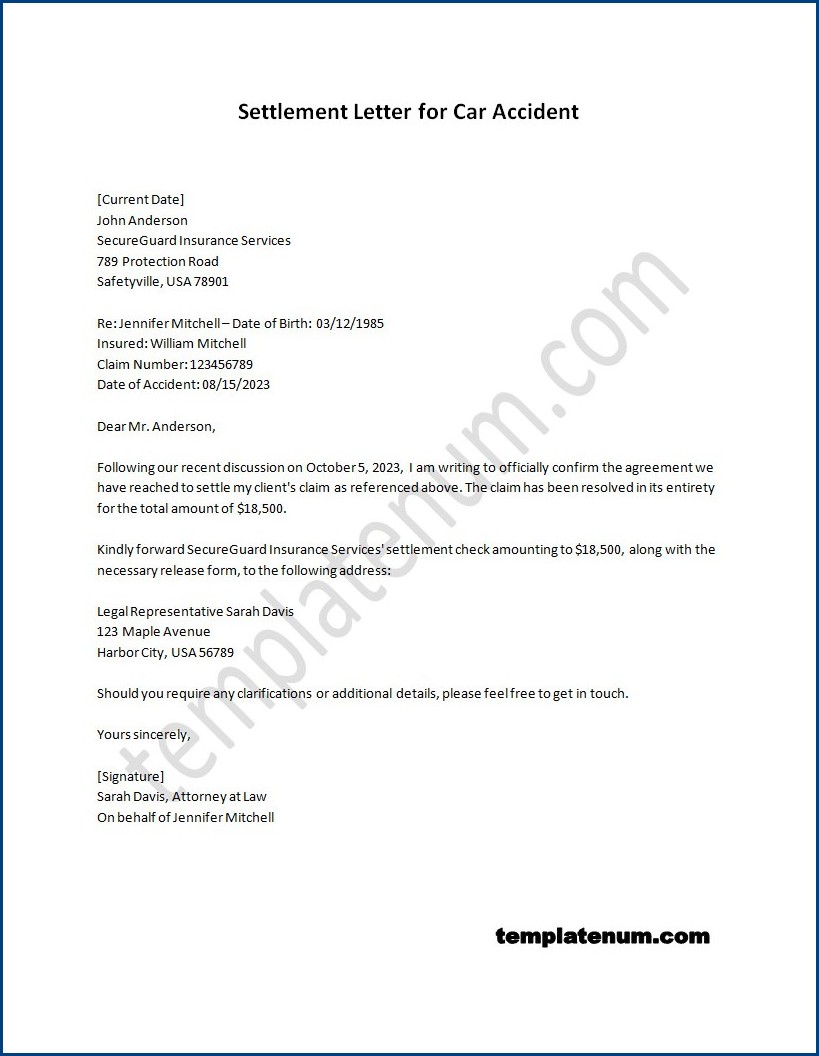How do you settle a car accident?
Here are some key steps to take when settling a car accident:
- Ensure everyone’s safety: The first priority is to check if anyone involved in the accident is injured. If there are injuries or the vehicles are obstructing traffic, call emergency services immediately.
- Exchange information: Exchange contact and insurance information with the other party involved in the accident. This includes names, phone numbers, addresses, driver’s license numbers, and insurance policy details. Additionally, it is advisable to gather contact information from any witnesses present at the scene.
- Document the accident: Take photos of the accident scene, including the damage to the vehicles involved. Make sure to also document any injuries sustained. This evidence can be valuable when filing an insurance claim or during legal proceedings.
- Notify your insurance company: Contact your insurance company and provide them with all the relevant information about the accident. They will guide you through the claims process and assess the damages.
- Seek medical attention: Even if you do not feel immediate pain or injuries, it is recommended to seek medical attention after a car accident. Some injuries may not manifest right away, and a medical professional can provide a thorough evaluation and necessary treatment.
Remember to remain cooperative and provide accurate information to the authorities and insurance companies throughout the process.
What is a car accident settlement demand letter?
A car accident settlement demand letter is a formal document sent by the injured party or their attorney to the at-fault driver’s insurance company. It outlines the details of the accident, the injuries sustained, and the financial damages incurred as a result. This letter serves as a request for compensation and settlement from the insurance company. It is an important step in the negotiation and resolution process following a car accident.
The purpose of this letter is to demonstrate the extent of the damages and make a formal demand for a fair and reasonable settlement. It is crucial to provide supporting documents such as medical records, bills, and photographs to strengthen the claim and increase the chances of a successful settlement negotiation.
What to include in a settlement letter for car accident?
Here are some key items to include in a settlement letter for a car accident:
- Accident details: Begin the settlement letter by providing a clear and concise description of the accident. Include the date, time, and location of the incident, as well as a summary of how the accident occurred. This will help establish the context and background of the case.
- Injuries and damages: List and describe all injuries sustained as a result of the car accident. Include medical reports, treatment records, and any other relevant documentation to support your claim for damages. Additionally, provide a detailed account of the property damage caused by the accident, including repair estimates or invoices.
- Liability: Clearly state who you believe is at fault for the accident. Provide any evidence or witness statements that support your position. If there is shared liability, outline the percentage of fault assigned to each party based on the circumstances of the accident.
- Compensation sought: Specify the amount of compensation you are seeking to cover your medical expenses, property damage, lost wages, pain and suffering, and any other applicable damages. Include supporting documents such as bills, invoices, or wage statements to substantiate your claim.
- Settlement terms: Clearly outline the terms of the settlement you are proposing. This may include a lump sum payment or structured payments over a period of time. Be specific about the amount and the timeline for payment.
- Acceptance deadline: Set a deadline for the other party to accept or reject the settlement offer. This will help expedite the negotiation process and avoid unnecessary delays.
By including these essential elements in a settlement letter for a car accident, you can effectively communicate your position and increase the chances of reaching a fair and satisfactory resolution. Remember to consult with an attorney or legal professional to ensure that your settlement letter accurately reflects your rights and interests.
